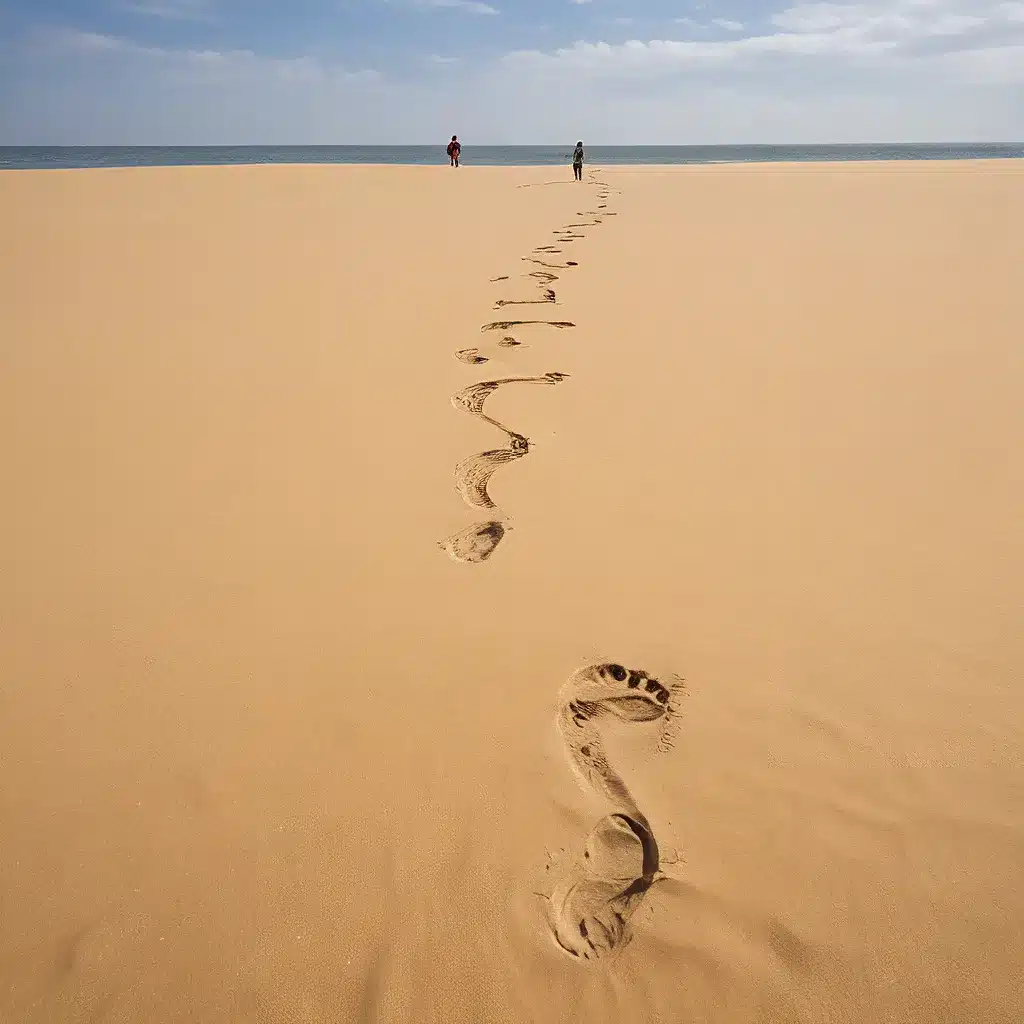
Uncovering the Mysteries of Ancient Landscapes
The Tularosa Basin in New Mexico is a land of stark contrasts, where the white dunes of White Sands National Park stretch out as far as the eye can see. Yet, this seemingly barren landscape holds the secrets of a bygone era, preserved in the very sands that have captured the footprints of those who walked this earth thousands of years ago.
In the ancient Lake Otero, which once occupied the Tularosa Basin, a remarkable tapestry of fossilized footprints has been revealed, offering a glimpse into the lives of the people and animals that once called this place home. These fossilized footprints are not mere imprints, but rather windows into the past, allowing us to piece together the stories of those who traversed these lands during the Ice Age.
Scientists continue to uncover new evidence of past life at White Sands National Park, shedding light on the diverse flora and fauna that thrived in this once-lush, verdant landscape. From the ancient camels and Columbian mammoths that roamed the grasslands to the dire wolves and American lions that prowled the wetlands, the fossil record paints a vivid picture of the intricate web of life that characterized this prehistoric ecosystem.
Tracing the Footsteps of Lost Civilizations
Beyond the footprints of the megafauna, the sands of the Tularosa Basin have also preserved the traces of human activity from thousands of years ago. During the Ice Age, when Lake Otero was a lush, thriving wetland, the human inhabitants of the region would have found abundant resources to sustain their way of life. These ancient peoples, whose very existence is etched into the fossilized footprints, represent a lost chapter in the story of human history.
Deciphering the archaeological clues left behind by these forgotten civilizations is a daunting, yet deeply rewarding task. Each footprint, each artifact, and each fragment of evidence holds the potential to unlock the secrets of the past, revealing the cultural practices, technological advancements, and social structures that defined these ancient societies.
The use of modern satellite technology and remote sensing techniques has revolutionized the field of archaeology, allowing researchers to identify and explore previously undiscovered sites with unprecedented accuracy. These technological advancements have not only expanded our understanding of the past but have also challenged long-held assumptions about the development and spread of ancient civilizations.
Decoding the Footprints of the Past
As we delve deeper into the archaeological record of the Tularosa Basin, we are confronted with a tapestry of mysteries that demand our attention. What stories do these fossilized footprints tell us about the daily lives of the people who once inhabited this land? How did they adapt to the changing climate and environmental conditions over time? What can we learn about their social structures, their beliefs, and their technological advancements from the remnants of their presence?
These are the questions that drive archaeologists, historians, and researchers to unravel the secrets of the past, one footprint at a time. Through meticulous analysis, careful excavation, and interdisciplinary collaboration, they seek to reconstruct the narrative of these lost peoples, bringing their stories to life and shedding light on the rich tapestry of human history.
At The Lost Kingdoms, we are dedicated to exploring the mysteries of ancient civilizations and the insights they can offer us about our own past, present, and future. By delving into the archaeological treasures of the Tularosa Basin and other significant sites around the world, we aim to spark curiosity, challenge assumptions, and deepen our understanding of the diverse tapestry of human experience that has unfolded across the sands of time.
Embracing the Future of Archaeology
As we continue to uncover the footprints of the past, we must also embrace the technological advancements that are transforming the field of archaeology. Remote sensing, satellite imagery, and advanced data analysis are just a few of the cutting-edge tools that are revolutionizing the way we explore and interpret the archaeological record.
Through the strategic application of these technologies, researchers can identify and map previously undiscovered sites, prioritize excavation efforts, and gain unprecedented insights into the spatial and temporal relationships between different archaeological features. This, in turn, allows for more comprehensive and nuanced understandings of the cultural, social, and environmental factors that shaped the lives of ancient peoples.
Moreover, the democratization of archaeological data through online platforms and interactive digital resources has empowered a new generation of citizen scientists to engage with and contribute to the ongoing exploration of the past. By fostering a collaborative and inclusive approach to archaeological discovery, we can unlock the full potential of this field of study, enriching our collective knowledge and inspiring a deeper appreciation for the enduring legacy of humanity’s footprints across the sands of time.


